| |
|
|
| |
First report of 2018
Sat 13th January, 2018
|
|
|
|
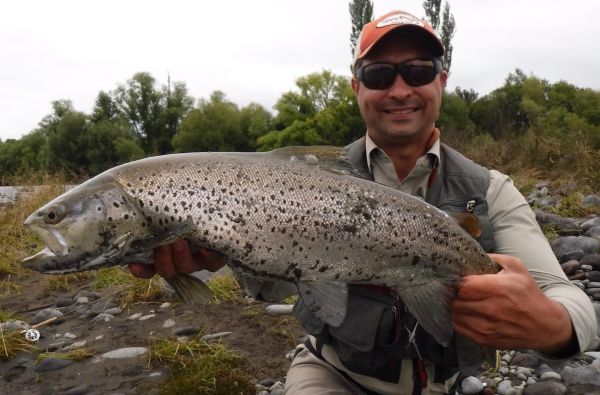 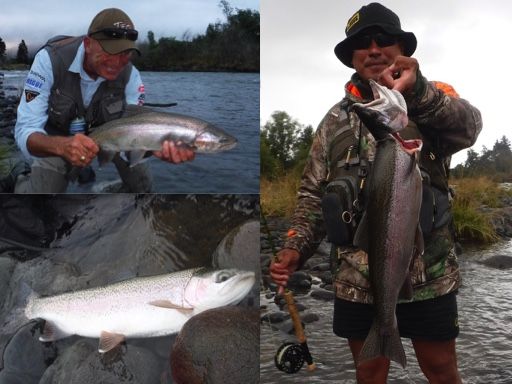  After last weeks big flood, levels dropped quickly as the weather improved. By early Sunday we were back out there and as the flows fell below 40 cumecs the Tongariro switched on. After last weeks big flood, levels dropped quickly as the weather improved. By early Sunday we were back out there and as the flows fell below 40 cumecs the Tongariro switched on.
As anticipated the fresh got some fish moving and there were some pretty good rainbows and browns caught. The photo doesn't do it justice but the rainbow above, held aloft by a very pleased local angler, was probably over five pounds. And Sean is holding one of three browns he landed in the murky water.
The flow graph has been up and down all week, which suggests that some adjustments by Genesis are still taking place.
Its currently in the low thirties and with the river still carrying a little color looks perfect.
I obviously haven't had time yet to get around the whole river but as you can imagine there are some significant changes after a big the flood like this. And not only the river itself has changed. The access to some stretches and pools has been eroded or is hampered by debris left behind as the waters subsided. The track from the small car-park to Boulder Reach is a prime example and is a bit tricky in places. When you arrive at the pool things have changed a bit as well. Although nothing much has altered on the TRB ... the true left is a different story. For much of its length the rocks and boulders have either been shunted elsewhere or been covered by a thick layer of silt.
Either way its now possible to easily wade out and reach the seam.
The head of the pool has also changed ... for the worse in my opinion.
A similar thing happened in Judges a few years ago. There, you were usually wasting your time fishing the "silted up" inside line because fish aren't keen on spending a lot of time anywhere near the stuff. And as far as the middle stretch was concerned you were much better off wading out to the silt bar that had formed half way across. From there you could easily reach the run on the opposite bank.
Back to Boulder Reach ...a little further up on the TRB, the Cliff and Fan Pool have altered a little as well. And the Cliff Pool in particular is a lot more user friendly than it was before this latest fresh. But again the route up there is littered with logs and other obstacles.
Around town there are some likely looking "new spots" to try out. And one or two of them are going to be worth keeping an eye on, especially when the winter runs are again in full swing.
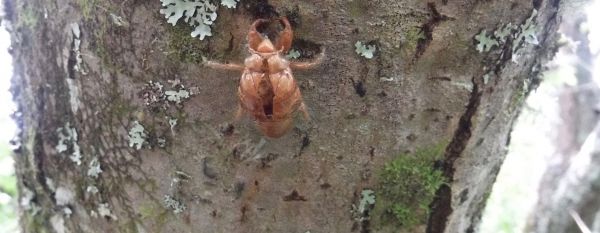 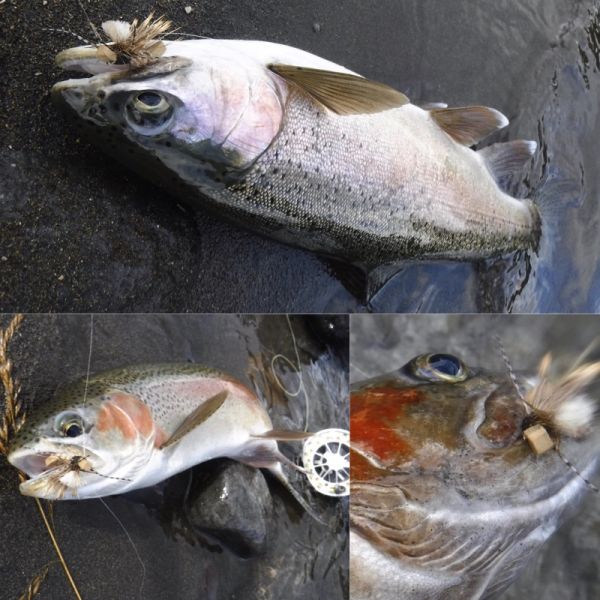
Last weeks miserable weather slowed the appearance of this years cicada brood. But noise levels are getting louder, more noticeably around town. I've had several fish ignore the nymphs and wallop the big indicator dry when fishing riffles early in the day.
But I have to say I still haven't spotted all that many discarded cases stuck to the trees and branches. I'm sure this will change once the weather settles down again. And for all I know it may already have done so because a big emergence can occur literally overnight.
So far cicada noise has been a lot quieter where the logging has been going on. And I wondered if this sort of disturbance could in any way affect the life cycle of these big insects. After digging around on the internet, I found the results of a study carried out in the USA.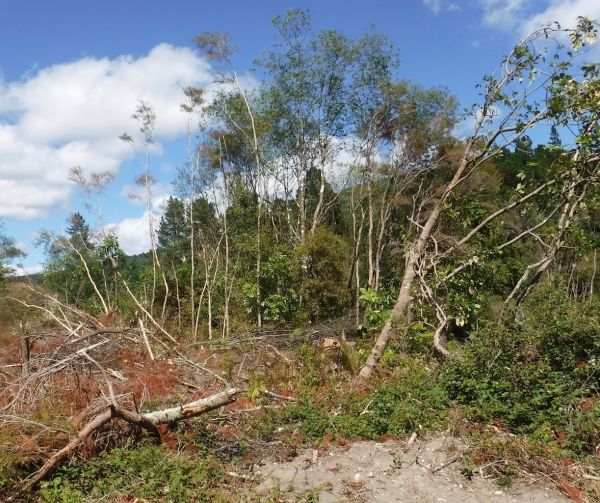
This particular research was undertaken when a forest was logged after a fire, so there are differences. But harvesting like that just carried out along the Tongariro not only removes the targeted pine trees. There's also a tremendous amount of unavoidable collateral damage as well. Below are some of the findings.
"Nymphs of Cicada orni feed on the sap of roots and can be indicators of the fate of the root-feeding fauna. I studied the cicada population of a pine forest which was affected in 2010 by a wildfire that burned all the vegetation above ground and was subsequently logged.
I hypothesized that the effect of these disturbances on the forest root system would negatively affect nymph abundance and length, due to the consequent food limitation. I used a BACI (before-after control-impact) design approach, assuming that root degradation, taking place around 1 year after the death of aerial structures, was the main impact on cicada nymphs.
Cicada exuviae attached to vegetation were collected as a proxy for nymphs. From 2011 to 2012, the relative abundance of exuviae increased from 12.6 to 23.3 exuviae/100 m2 in the control area, but decreased from 18.0 to 3.6 exuviae/100 m2 in the burned area, probably as a consequence of progressive root degradation and/or to the absence of 2-year-old nymphs due to the destruction of eggs by fire. However, interannual trends in exuviae length of males and females cicadas were not significantly different between areas. This population crash illustrates a previously undescribed time lag in the response of belowground animals to fire and logging which may have consequences for the ecosystem as a whole."
It'll be interesting to see how it pans out.
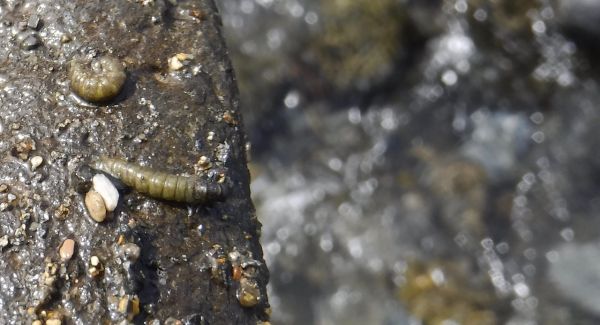 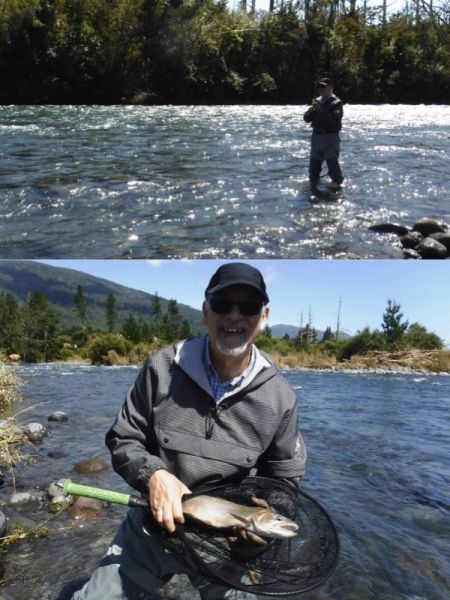 Whenever we get a big flood the insect life in the river gets knocked around when the rocks and boulders where they hide out are pounded by the rushing flood waters. Whenever we get a big flood the insect life in the river gets knocked around when the rocks and boulders where they hide out are pounded by the rushing flood waters.
I mentioned last time you could hear the rocks rolling along the river bed as they were being carried downstream.
Fortunately the rocks not turned over during the flood are still home to plenty of caddis etc. and the insect population will very quickly recover.
This is one of the reasons things switch on after a good fresh, as hungry fish mop up the millions of nymphs and larvae displaced by the rising waters. Its also a good time to experiment and suspend your nymphs {especially in slower water} rather than always anchoring them to the bottom off a bomb.
If you're fishing "euro style" fish will often take the top dropper when you're fishing faster water after a fresh. As Dave discovered nymphing a run upriver.
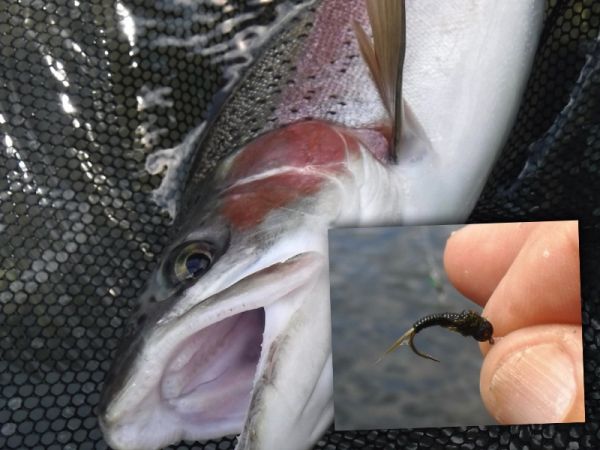 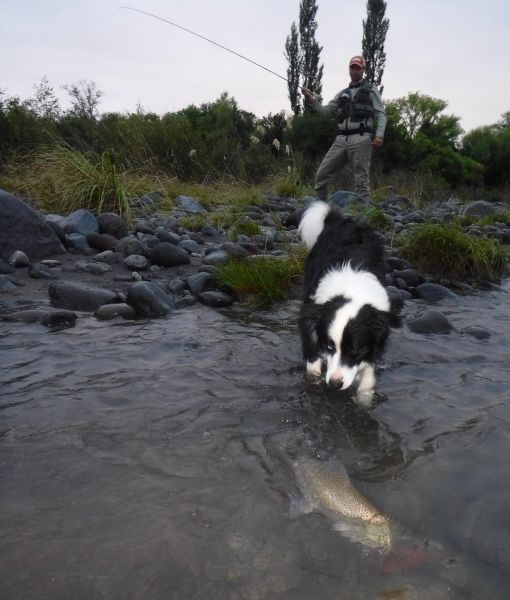
Although the river is clearing its still carrying a little bit of color so make it easier for the fish to spot your nymphs. A fly that works well now is "Seans Magic May." When wet it turns a very dark olive which contrasts well when the water is still a little milky and I usually get a few on this one after a fresh.
Weather-wise it looks like a bit of a mixed bag again next week but Met Service say that :
"Temperatures are forecast to track slightly warmer than average in the South Island this week, before tending more towards average for the remainder of the month. In the North Island, temperatures are forecast to be average to slightly above average"
Now that "the madness" is over again for another year, angling pressure should be a lot less along the banks of the Tongariro. And after the flood we have a whole new river to explore... I'm looking forward to the next few weeks.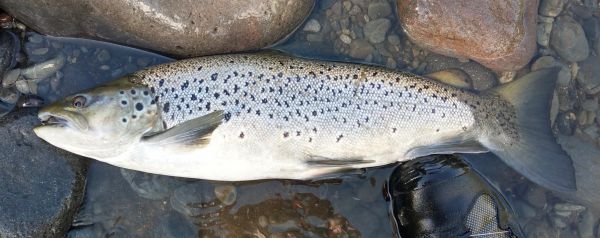
For me its all about brown trout during the summer months and there'll be plenty of them in the reports from now on. At the beginning of the week 60 year old Mike Fransham caught this one on a wet fly in Major Jones. And the Hydro amongst other places is also throwing a few up.
Tight lines
Mike |
|
|
| Back to Top |
|
|
|
|
|
|
|